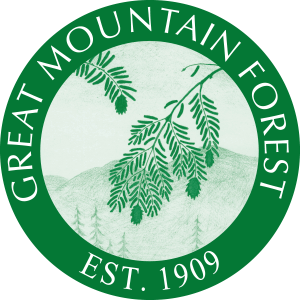
PREVIOUS WEATHER REPORTS
February 2021
An Abundance of Snowfall
By Russell Russ
February was a snowy month. After several years of rather soft winter weather in what is typically wintertime, it seemed as if this February was so much colder and so much more snowy than normal. In fact, it was rather normal temperature-wise, but there was more snowfall than average. Not record setting snowfall by any means, just more than average. Plus, with the more normal wintertime February temperatures, what snow we got, stayed on the ground for the entire month. It was a good old fashioned winter month. This made for happy people looking to ski, skate or go ice fishing and generally anyone else that enjoys snow and typical Norfolk winter weather.
The month’s low temperature of 4 degrees was observed on February 12. There were five days this month with single digit temperatures, but no days recording zero or below zero. The high temperature of 46 degrees was observed on February 24. There were no daily record high or low temperatures this month. The average monthly temperature was 22.8 degrees, just 0.6 degree above normal. It was the coldest February in Norfolk since 2015. February 2015’s average temperature of 10.9 degrees was Norfolk’s second coldest month of any month since 1932. The warmest February on record was in 2002 with 30.7 degrees. The coldest was in 1934 with 9.0 degrees, making that also the coldest month of any month as recorded at this weather station.
Total precipitation recorded for the month was 3.42 inches, just 0.21 inch below normal. A vast majority of February’s precipitation was in the form of snow, with a small portion coming as freezing rain. Obviously, the month’s cold temperatures played a role in this predominately frozen winter precipitation. The 2021 calendar year (January and February) total precipitation amount of 5.53 inches was 2.12 inches below normal. The record for most February total precipitation is 11.70 inches from 1981, the least amount is 0.60 inch from 1987.
February’s monthly snowfall total of 35.0 inches was 14.7 inches above normal. Snow on ground depth during the month ranged from 9 inches to 21 inches, with an average snow on ground of over 17 inches during the month. This month ranked as Norfolk’s eleventh snowiest February over the last 90 years. It was the snowiest February since 2014, then 2010 before that, then 1972 before that. Norfolk’s top seven snowiest February’s occurred between 1940 and 1972. The record for most snowfall in February is 52.4 inches from 1969, the least is 4.8 inches from 1998.
The 2021 calendar year snowfall total through February was 47.4 inches, 6.6 inches above normal. This is over 33 inches more snowfall than the same period last winter. The snowfall total for this winter season, October through February, was 71.5 inches, 6.1 inches above normal for this time period. This is over 31 inches more than last winter season for this time period. Hence, the happiness of the area’s snow loving crowd, from those that try to make a living from snow to those that just play in it.
March is often Norfolk’s transition month between winter and spring. March is a fickle weather month and can throw a wild mix of weather conditions at us. This March through mid-month was much colder than normal with minimal precipitation and minimal snow. It was certainly cold enough for snowfall, but the storms just did not form. The cold kept February’s snow on the ground in most places at least through mid-month. Many local maple syrup producers have reported that this season has been slow due to the cold temperatures. That may change as the forecast for the last quarter of March is for temperatures to increase. Precipitation is needed, so hopefully the warmer conditions also bring some beneficial early spring moisture.
January 2021-Part 2
Winter Returns
By Russell Russ
The year of 2020 was Norfolk’s fourth warmest year on record and October through December were all above normal for temperature. Snowfall for the current winter season, however, was about normal through December. What would this mean for January? As it turned out, January was a little warmer than normal and snowfall was below normal, but there was frequent wintry precipitation and there were some cold temperatures. Winter had arrived, perhaps a little soft, but it arrived.
January’s average temperature of 22.9 degrees was 2.1 degrees above normal. It was five degrees colder than January 2020. There were no daily record temperatures this month, but there were four days with single digit temperatures and one day recorded a low of 2 below zero. January’s warmest temperature was a high of 39 degrees on January 2. In all of 2020 there were seven days with single digit temperatures and the low all year was zero. Winter just might have found its way back to Norfolk. Norfolk’s warmest January on record was in 2002 with an average temperature of 31.7 degrees and the coldest was in 1982 with 11.7 degrees.
January’s total precipitation of 2.11 inches was 1.93 inches below normal. The wettest January occurred in 1979 with a total of 11.77 inches and the driest was in 1970 with just 0.74 inch. The monthly snowfall total of 12.4 inches was 8.3 inches below normal. Of January’s thirty-one days, there was some sort of precipitation that fell during sixteen of those days. Only a small portion of the precipitation was plain rain, most was in the form of snow. There was at least three inches of snow on the ground for twenty-eight days during January, with depths ranging from three to eight inches. The snowiest January occurred in 1987 with 50.5 inches. Coming in at second snowiest was January 2011 with 50.0 inches. The least snowy was in 1980 with just 2.6 inches.
The 2020-2021 (October-January) winter season snowfall total through January was 36.5 inches, 8.5 inches below normal. It has not been super winter-like, but it has seemed like a more normal winter than we have experienced in Norfolk for the last few years.
A look at February’s weather through mid-month showed that snowfall and cold temperatures were the norm. Norfolk was seeing a good old fashioned winter. By February 9, we had already exceeded our average snowfall amount for the entire month. By February 16, temperatures were running about two degrees below normal and we were nearly 3.5 inches above normal for snowfall, with more snow in the forecast for later in the month. Unlike previous years when the winter storms seemed to skirt the region, this winter we are getting the storms and on a fairly regular basis. We are not breaking any snow or cold records so far this winter, it is just normal winter for Northwestern Connecticut. Snow lovers had lost their faith over the last two years. It seems that their faith may be restored, as of February anyway.
January 2021-Part 1
Happy New Year
By Russell Russ
January 2021 begins the 90th consecutive year of daily weather observing from the Norfolk 2SW weather station. Stay tuned for future weather narratives. While this website is undergoing some improvements, please see below for the weather narratives from the year 2020. Enjoy the weather look back. -Russell

GET IN TOUCH!
860 824-8188




